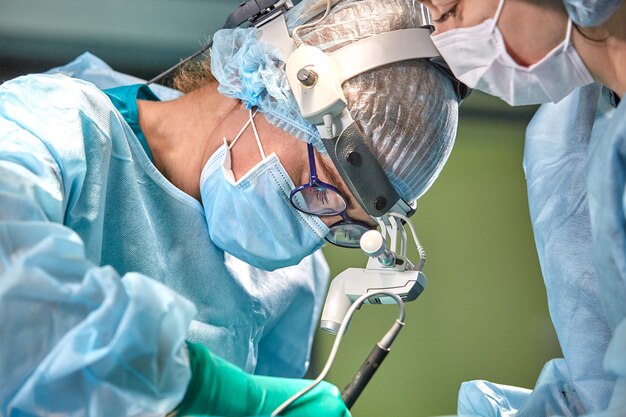What You Need to Know About Sedation for Cataract Surgery
Cataract surgery is one of the most common and successful surgical procedures performed today. If you or a loved one is preparing for this procedure, you may have questions and concerns regarding what to expect, particularly about anesthesia and sedation. Many wonder, "Will I be sedated for cataract surgery?" This comprehensive guide aims to demystify the process and ensure you know exactly what to expect.
Understanding Cataract Surgery
Cataract surgery involves removing the cloudy lens of the eye and replacing it with an artificial lens to restore clear vision. It's typically an outpatient procedure and is known for its high success rate and fast recovery time. The actual operation is relatively quick, often taking less than 30 minutes per eye.
Why Sedation is a Consideration
Sedation plays a crucial role in cataract surgery for several reasons:
- Anxiety Reduction: Just like any surgical procedure, cataract surgery can cause anxiety. Sedation helps calm the patient.
- Pain Management: While the procedure isn't painful, sedation ensures any discomfort is minimized.
- Motion Control: Keeping the patient still is necessary for the precision required in eye surgery.
Types of Anesthesia Used in Cataract Surgery
1. Local Anesthesia
The predominant form of anesthesia for cataract surgery is local anesthesia, typically administered as eye drops to numb the eye's surface. This approach has several advantages:
- Minimal Risks: Local anesthesia is low-risk and avoids potential complications associated with general anesthesia.
- Quick Recovery: Patients generally recover faster from local anesthesia compared to general anesthesia.
- Awareness: Patients remain mostly conscious, allowing them to follow instructions during the procedure.
2. Moderate Sedation (Conscious Sedation)
Beyond local numbing drops, moderate sedation (or conscious sedation) is often used to enhance comfort. This type of sedation uses medications administered intravenously to help the patient relax.
- Awareness with Calmness: Patients remain awake but are in a relaxed state.
- Minimal Memory: Often, patients remember little or nothing of the procedure.
3. General Anesthesia
General anesthesia is rarely used for cataract surgery, reserved for specific cases, such as patients with severe anxiety, certain medical conditions, or young children. Under general anesthesia, the patient is completely unconscious.
Factors Influencing Sedation Decisions
- Patient Anxiety Level: The level of sedation can be adjusted depending on how anxious the patient feels about the surgery.
- Medical History: Conditions such as allergies, sleep apnea, or heart disease can influence anesthesia choice.
- Personal Preference: Some patients prefer to be more or less aware during the procedure, which can influence the level of sedation used.
What To Expect on the Day of Surgery
Before the Procedure
- Preparation: You will receive detailed instructions on when to stop eating and drinking before surgery.
- Arrival and Anesthesia: Upon arrival, a healthcare professional will go over your medical history and discuss the anesthesia plan. Local anesthesia and sedation will then be administered.
During the Procedure
- Comfort and Monitoring: You'll be closely monitored throughout the procedure to ensure comfort. Many are surprised at how quickly and easily it goes.
After the Procedure
- Recovery Period: You'll rest in a recovery area until the sedative wears off. Most patients remain in the recovery area for a short time.
- Post-Surgery Care: It's crucial to arrange transportation home, as sedative effects can linger. Follow any post-operative care instructions given by your healthcare provider.
Practical Tips for Cataract Surgery Patients
Here are some quick tips to help ensure a smooth surgery experience:
🛌 Get Adequate Rest: Being well-rested can help reduce surgery-day anxiety.
🥗 Eat a Light Meal: If instructed to fast, a light meal the night before can help with comfort.
👕 Dress Comfortably: Wear comfortable, loose-fitting clothing on the day of the surgery.
🕶️ Bring Sunglasses: Your eyes may be sensitive to light afterward.
🚗 Arrange Transport: Ensure someone is available to drive you home due to lingering sedative effects.
The Importance of Discussing Concerns with Your Surgeon
Understanding your options and discussing any concerns with your eye care professional is vital. Here are some questions that can help guide these discussions:
- What type of sedation will I receive?
- What are the risks associated with the chosen method of sedation?
- How should I prepare on the day of surgery?
- What can I expect during recovery?
Conclusion Insight
While cataract surgery might seem daunting, understanding the role of sedation and anesthesia can greatly alleviate concerns. With local anesthesia and moderate sedation most commonly used, patients are typically comfortable and relaxed throughout the process. Ultimately, clear communication with your eye care team will ensure you are well-informed and prepared, paving the way for a successful surgery and a smooth recovery.
By focusing on the necessity and nature of sedation, you are better positioned to face your surgery with confidence, ensuring a seamless journey towards restored vision. Remember, you are not alone — millions undergo cataract surgery each year successfully, and soon, you will be one of them.
